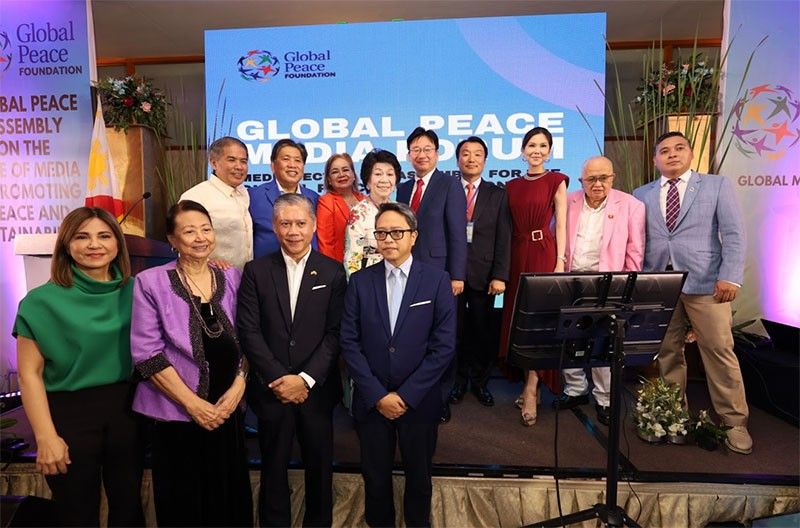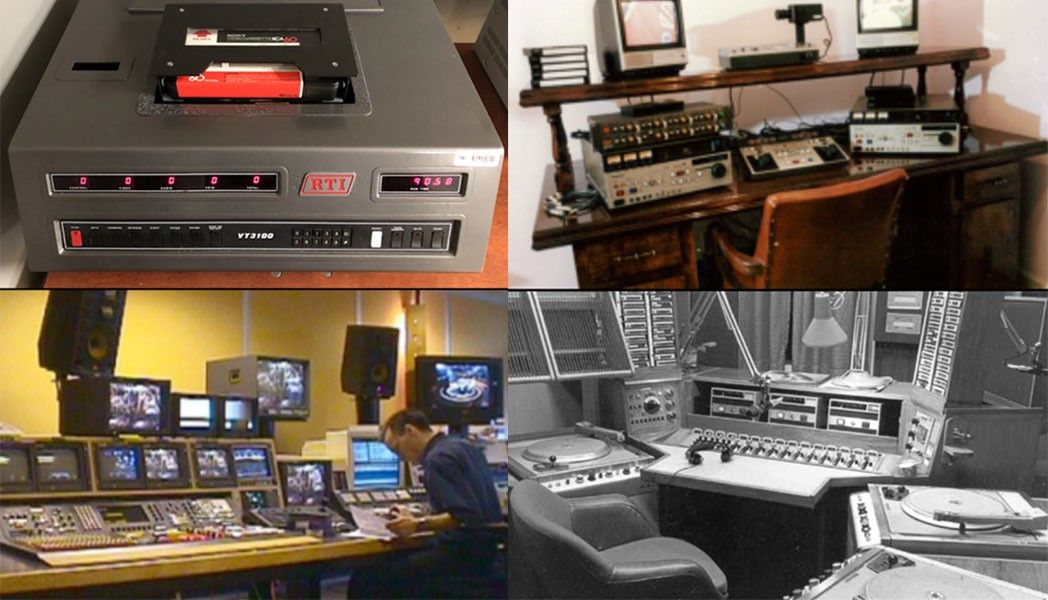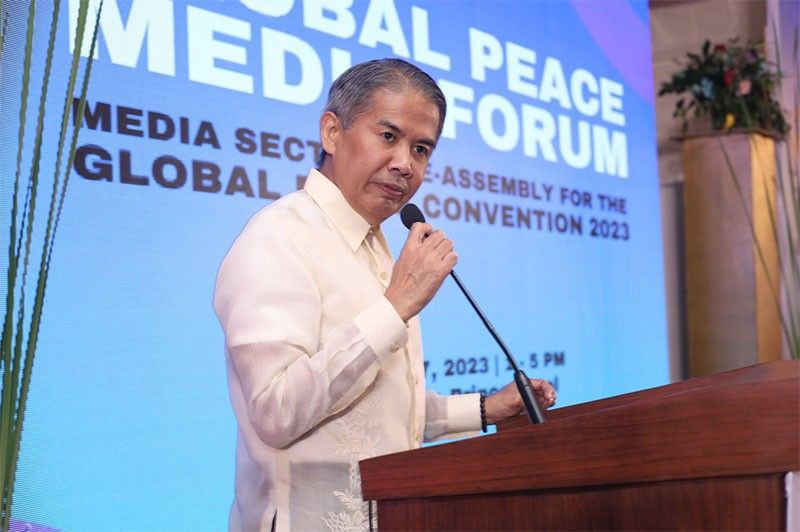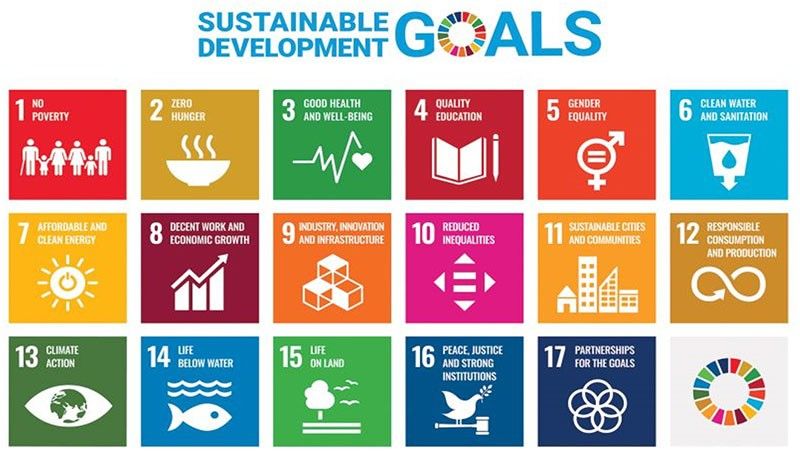Media as an invaluable partner for global peace (Part 1)


The Global Peace Foundation, an international nonprofit organization focused on the pursuit of community, national, and regional peace-building activities, held its Global Peace Media Forum in preparation for the Global Peace Convention this December 2023. The program sought to gather media professionals across different disciplines for a forum on how our industry can contribute to the progress of their cause.
Among these personalities was yours truly – I was lucky enough to be invited as one of the speakers. I'd like to share with you some excerpts from my take on how the media can be a partner for peace, which, incidentally, also made me reminisce about my journey in the industry.

Growing and evolving with media
When I learned about the mission of the Global Peace Foundation and saw the esteemed speakers who would be joining me today, it filled me with gratitude for belonging to a generation that has witnessed the transformative power of traditional journalism, and how it navigated the digital revolution.
I think I can speak for a lot of us when I say that we weren’t just observers of this evolution; we have influenced, pioneered, and shaped it.
Our experience has given us invaluable insights into the effects of the digital revolution on the media landscape, whether from the perspective of broadcast or print media professionals.
I recall the earliest days of my career in ABC News in New York City when nonlinear editing was the most cutting-edge technology in media, a far cry from the advanced tools we have today.

In contrast, when I returned to the Philippines to join ABS-CBN, we were expectedly still a bit behind in terms of broadcasting technology, still using U-matic tapes and linear editing. There was no “Teleradyo” then.
But fast forward to today, after I spent nearly two decades in TV, radio, and "Teleradyo," we have witnessed a radical transformation in how news and media are created and disseminated, all thanks to digital platforms and social media.
Being a journalist has been one of my life's greatest blessings, enabling me to be a firsthand witness and narrator of the most significant stories in our country and around the world. More importantly, it gave me the opportunity to be of service to our kababayans.
Just to share with you my journey -- my transition to embracing digital platforms can be divided into three phases: pre-pandemic, during the pandemic, and post-pandemic.
Before the pandemic, social media to me was basically just an extension of my work. I began by sharing clips of my reports and stories from TV Patrol, Salamat Dok, Umagang Kay Ganda, Balitang Middle East, among others. Before I knew it, I had been gradually amassing a following – close to a million FB followers.
When the pandemic hit, I wanted to make the most out of the opportunity my audience gave me: I began producing entertaining online shows but still focused on advocacies close to my heart --- health, family, child welfare, women empowerment, and of course, current events.

We all witnessed how the post-pandemic era ushered in new beginnings for many. Others chose comedy or entertainment as their content. For me, it came with the surprise that traditional media professionals like me could have up to 20 million in audience reach. It was enough to reinforce my belief in the power of the media and the public’s need to be informed and educated on important issues.
I was also lucky enough to add another form of media to my platforms, when I became a regular columnist for The Philippine Star.
As I continue to pursue this multimedia career, I vowed to do so as a “tradigital” journalist – a word I had coined. To me, this approach means merging truth, accuracy, and public service of the traditional press, with the engaging nature of digital media.
The unique role of the media
Why is this symbiotic relationship between traditional and social media so significant in our advocacy for peace?
It starts with the wealth of experience that veteran journalists bring. I think I can speak for my colleagues when I say that because of our experience, we’ve been able to gain a clearer understanding of how the public forms their perspectives. And that kind of understanding on the role of communications is an invaluable skill in the pursuit of peace.
Social media, as we all know, is an indispensable tool for amplifying sustained campaigns & messages. As media professionals invested in the development of peace, we need to ensure that the messages we disseminate in all of our platforms are filled with hope, peace, inspiration, and love.
Take, for example, the Israel-Hamas conflict – the most recent tragic display of war and destruction. Regrettably, we are no strangers to such images, with armed conflicts in Mindanao often bringing us parallel scenes of devastation.
I recently had the privilege of engaging in a conversation with the leaders of the Bangsamoro Autonomous Region in Muslim Mindanao (BARMM), and their collective vision is clear – they yearn for a progressive, modernized region.
But they know, and we know, that this dream cannot become a reality without peace.
As we've learned from the COVID-19 pandemic, beyond basic needs like food and livelihood, people long for hope and inspiration to propel them forward.
Luckily, we, as media practitioners, possess the unique ability to capture and portray stories with such vividness and emotion that they can ignite public sentiment, uniting people behind a common cause, just as Filipinos come together in times of calamity.
This means that we can also channel this collective spirit to fight for peace.
But where do we start?

Resilience for the Filipino family
I propose that we begin by addressing the root causes of armed conflict and insurgency: poverty, corruption, sickness, illiteracy, and hopelessness. It's an imposing and daunting list, I know, and at times it can sound impossible. And of course, there's no 'magic bullet' to quickly solve all of these problems.
However, one approach I believe in is strengthening a core unit of our society: the family. By planting the seeds of peace within our communities, we can cultivate roots that are resilient in the fight for peace.
The welfare of families and children is one advocacy that I was fortunate enough to have -- as a part of my career, when the late Gina Lopez asked me to head Bantay Bata 163. I was blessed to be able to have the chance to fulfill this role while I continued my work in my news and current events shows.
By this time, I was also already a mother myself, which made the work even more personal.

The United Nations’ Sustainable Development Goal-16 (SDG-16) talks about the importance of the protection of Filipino families and children to global peace. Families are the first and foremost influential educators in every child's life, and by instilling values of peace, empathy, communication and conflict resolution in their children, families contribute to creating future agents of peace and change.
While we've all done our share, there's still a need to keep going -– there are still threats and issues affecting families and children, and we must respond in numbers, united in our goal for global peace.
Empowering Filipino families has been a cause I have dedicated a substantial part of my life and career to. It is an advocacy I’d like to share with my fellow media professionals. After all, aren't we all part of the same community, united by our roles as a kapamilya, kapuso and kapatid?

The challenge for our platforms
I want to emphasize the immense power of the platforms we wield. When we combine the vast audiences and influence of all the esteemed speakers here, the potential reach and impact of our messages of peace and hope are undeniable.
With the integration of social media, we have the capacity not only to create movements for peace, but also to inspire and amplify hope.
In realizing global peace, we must recognize the pivotal role of children and families. Empowering families to provide a stable, nurturing, and values-driven environment is a crucial step toward a more peaceful world.
This objective needs a collective effort from us. By using our tradigital platforms to foster strong, peaceful, and loving families, we lay the groundwork for future generations that can contribute to building a more just and peaceful world.
I’m looking forward to collaborating with everyone here so we can make the most of our platforms and create more compelling content that educates, strengthens, and empowers Filipino families.

At this point, I’d like to thank the organizers of this event, the Global Peace Foundation – under the leadership of Mr. Aldrin Nituma (Global Peace Philippines Executive Director) and Mr. Ingill Ra (Global Peace Asia Pacific President) -- for putting together a very successful program for us today, as well as for all of the work that the foundation has done in the pursuit of peace.
Let us all work together as communicators, united in creating messages that inspire conversations that matter, and ignite movements that build a peaceful nation.
___
You can follow my social media accounts: Instagram, Facebook, YouTube, Tiktok, Twitter and Kumu. Please share your stories or suggest topics at editorial@jingcastaneda.ph. Watch Pamilya Talk on Facebook, YouTube and Kumu (@JingCastaneda – 12:00 noon, Monday) and on Jeepney TV every Saturday at 5 p.m.



















